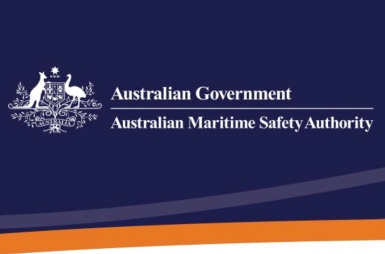
The AMSA National Compliance Plan 2025-2026 has been published by the Australian Maritime Safety Authority. It outlines a number of key compliance activities that support welfare, safety and pollution prevention across domestic and foreign-flagged vessels.
According to the AMSA National Compliance Plan 2025-2026, the authority outlines priority activities for the upcoming year, providing industry with a clear understanding of the regulatory focus and rationale. Based on safety data, trends, and expert input, the plan supports a transparent, risk-based approach to regulation. Priorities include targeted inspections, education and collaboration aimed at reducing marine pollution, improving seafarer welfare and enhancing safety across domestic and international operations.
AMSA National Compliance Plan 2025-2026 key focus areas are:
- Risk-based inspections of foreign and Australian flagged vessels, focusing on maintenance, pilot ladder safety, cargo securing, and pollution prevention.
- Seafarer safety and welfare under the Maritime Labour Convention, including wage compliance, and workplace risk assessments.
- Domestic vessel safety, with priorities on fatigue management, SMS implementation, lithium-ion battery risks, hazardous gases, and lifejacket wear.
- Safe towing and flood operations for emergency service vessels, with targeted education.
- Support for Aboriginal and Torres Strait Islander operators to strengthen safety management system (SMS) implementation and safe operations.
- Joint inspections with WorkSafe targeting high-risk activities such as snorkelling and diving to improve safety outcomes.
Risk based inspections targeting
For 2025-2026 AMSA will conduct a minimum of 2,400 PSC inspections prioritised through its risk based targeting model. Additionally, AMSA will continue to focus on shipboard maintenance during PSC inspections as undertaken in the 2023-2024 and 2024-2025 National Compliance Plans.
Pilot ladder safety
The AMSA National Compliance Plan 2025-2026 will adopt a safety compliance approach to address ongoing issues with pilot ladder arrangements. This will include industry education and awareness, followed by PSC and FSC targeted inspections. As part of this approach, AMSA will engage with pilot associations and relevant maritime organisations to gather operational insights and reinforce safety expectations on pilot ladder arrangements on vessels.
Cargo handling/securing
A Focused Inspection Campaign (FIC) on Marine Order 32 will be undertaken to ascertain the level of compliance against MO 32. In parallel, AMSA will undertake education focused on cargo securing practices. This will aim to raise industry awareness of common deficiencies, regulatory expectations, and the serious safety and environmental risks associated with improperly secured cargo.
Concurrent inspections with Fair Work Ombudsman (FWO) focusing on seafarer wages
AMSA and the Fair Work Ombudsman (FWO) will conduct joint compliance activities, including concurrent inspections, focusing on MLC requirements and the payment of Seagoing Industry Award 2020 Schedule A wages on vessels operating under a temporary license. This coordinated approach supports more effective enforcement and aims to ensure that seafarers’ employment conditions meet both international and national regulatory standards.
Lithium-Ion batteries
The AMSA National Compliance Plan 2025-2026 will develop comprehensive guidance to support education on the safe installation, operation, and maintenance of Lithium-ion battery systems aboard domestic commercial vessels, a subject of great concern currently for all involved in the maritime sector. Additionally, as part of the certification process (Certificate of Survey and Certificate of Operations), AMSA will conduct focused assessments for vessels operating with Lithium-ion battery installations. These assessments will ensure that vessels meet the required safety standards and that proper risk assessments are in place to address the unique challenges posed by these systems.
Persons overboard, fatalities
AMSA will maintain a strong compliance focus on lifejacket wear and associated risk assessment requirements, particularly in operations where crew overboard risks are high. This will involve a continuation of targeted education and outreach, refreshing and reinforcing key messages from previous education campaigns.
As stated, compliance activities applied as part of this plan include education through communication activities, development and dissemination of guidance material, and workshops.
Inspections involve both scheduled and unscheduled vessel checks carried out by marine inspectors to ensure compliance with maritime legislation and to detect systemic issues within the accredited surveyor scheme and related entities.
Furthermore safety compliance consists of a combination of education, focused inspections, and audits, typically starting with an education campaign followed by inspections to assess compliance and determine further necessary actions.
Compliance checks and monitoring activities are combined with education programs and supported by partnerships with State and Territory agencies across Australia, enabling joint monitoring efforts.
Download the plan: AMSA National Compliance Plan 2025 2026